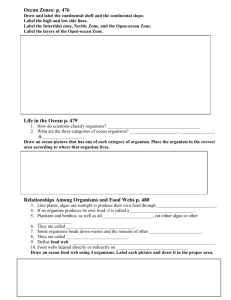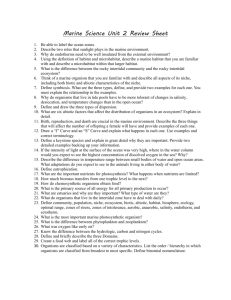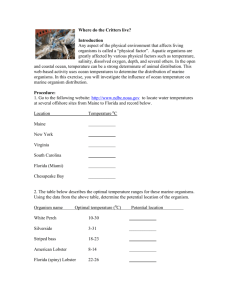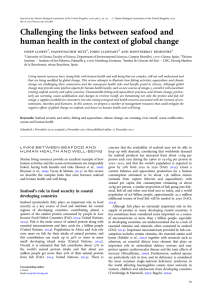Unit 4 Sample
advertisement
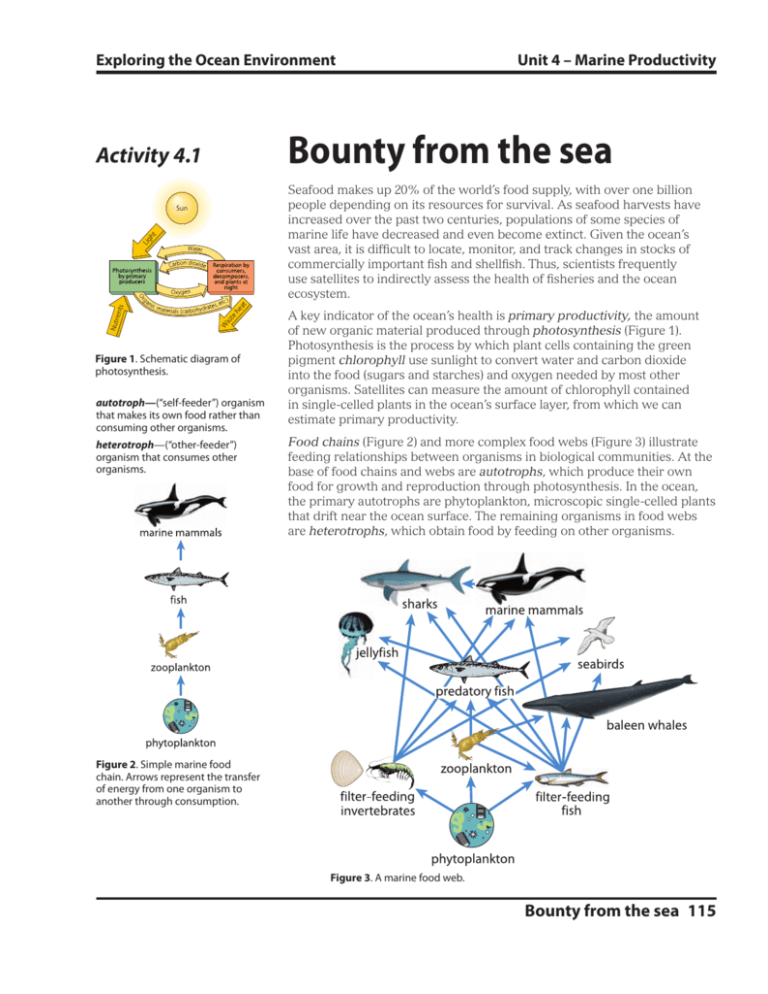
Exploring the Ocean Environment Activity 4.1 Unit 4 – Marine Productivity Bounty from the sea Seafood makes up 20% of the world’s food supply, with over one billion people depending on its resources for survival. As seafood harvests have increased over the past two centuries, populations of some species of marine life have decreased and even become extinct. Given the ocean’s vast area, it is difficult to locate, monitor, and track changes in stocks of commercially important fish and shellfish. Thus, scientists frequently use satellites to indirectly assess the health of fisheries and the ocean ecosystem. Figure 1. Schematic diagram of photosynthesis. autotroph—(“self-feeder”) organism that makes its own food rather than consuming other organisms. heterotroph—(“other-feeder”) organism that consumes other organisms. A key indicator of the ocean’s health is primary productivity, the amount of new organic material produced through photosynthesis (Figure 1). Photosynthesis is the process by which plant cells containing the green pigment chlorophyll use sunlight to convert water and carbon dioxide into the food (sugars and starches) and oxygen needed by most other organisms. Satellites can measure the amount of chlorophyll contained in single-celled plants in the ocean’s surface layer, from which we can estimate primary productivity. Food chains (Figure 2) and more complex food webs (Figure 3) illustrate feeding relationships between organisms in biological communities. At the base of food chains and webs are autotrophs, which produce their own food for growth and reproduction through photosynthesis. In the ocean, the primary autotrophs are phytoplankton, microscopic single-celled plants that drift near the ocean surface. The remaining organisms in food webs are heterotrophs, which obtain food by feeding on other organisms. Figure 2. Simple marine food chain. Arrows represent the transfer of energy from one organism to another through consumption. Figure 3. A marine food web. Bounty from the sea 115 Exploring the Ocean Environment biotic community— group of interdependent organisms inhabiting the same region and interacting with each other. anchovies—small fish, similar to sardines, that eat zooplankton. tuna—large predatory fish that eat other fish. Unit 4 – Marine Productivity The preservation of each link in a food web is critical for maintaining diverse and healthy biotic communities. However, certain organisms are more critical than others. 1. Examine the complex marine food web in Figure 3. Add anchovies (A), tuna (T), and humans (H) to the figure where you think they fit best. Draw arrows as needed to show consumption of and by other organisms. 2. What do you think would happen if you removed all of the autotrophs from the marine food web? 3. What do you think would happen if you removed one of the heterotrophs such as the predatory fish? 4. How do humans influence food webs? respiration—process by which organisms oxidize or “burn” food, producing water and carbon dioxide. What are nutrients? Nutrients are chemical compounds that are used by bacteria and plants as the building blocks for organic material. Common nutrients include: • • • • phosphates (PO4-) nitrates (NO3-) silica (SiO4-) iron (Fe3+) 116 Bounty from the sea Photosynthesis requires four key ingredients: water, sunlight, nutrients, and carbon dioxide. For marine autotrophs like phytoplankton, there is plenty of water available in the oceans. Carbon dioxide is also abundant in ocean waters. It is released as a by-product of respiration, and it is readily absorbed from the atmosphere into the ocean. Thus, water and carbon dioxide are not limiting resources for photosynthesis or primary productivity in the ocean. However, marine productivity is controlled or limited by the availability of the other two necessary resources—sunlight and nutrients. 5. How do you think the availability of limiting resources might vary in the ocean (where or when would they be high or low)?




